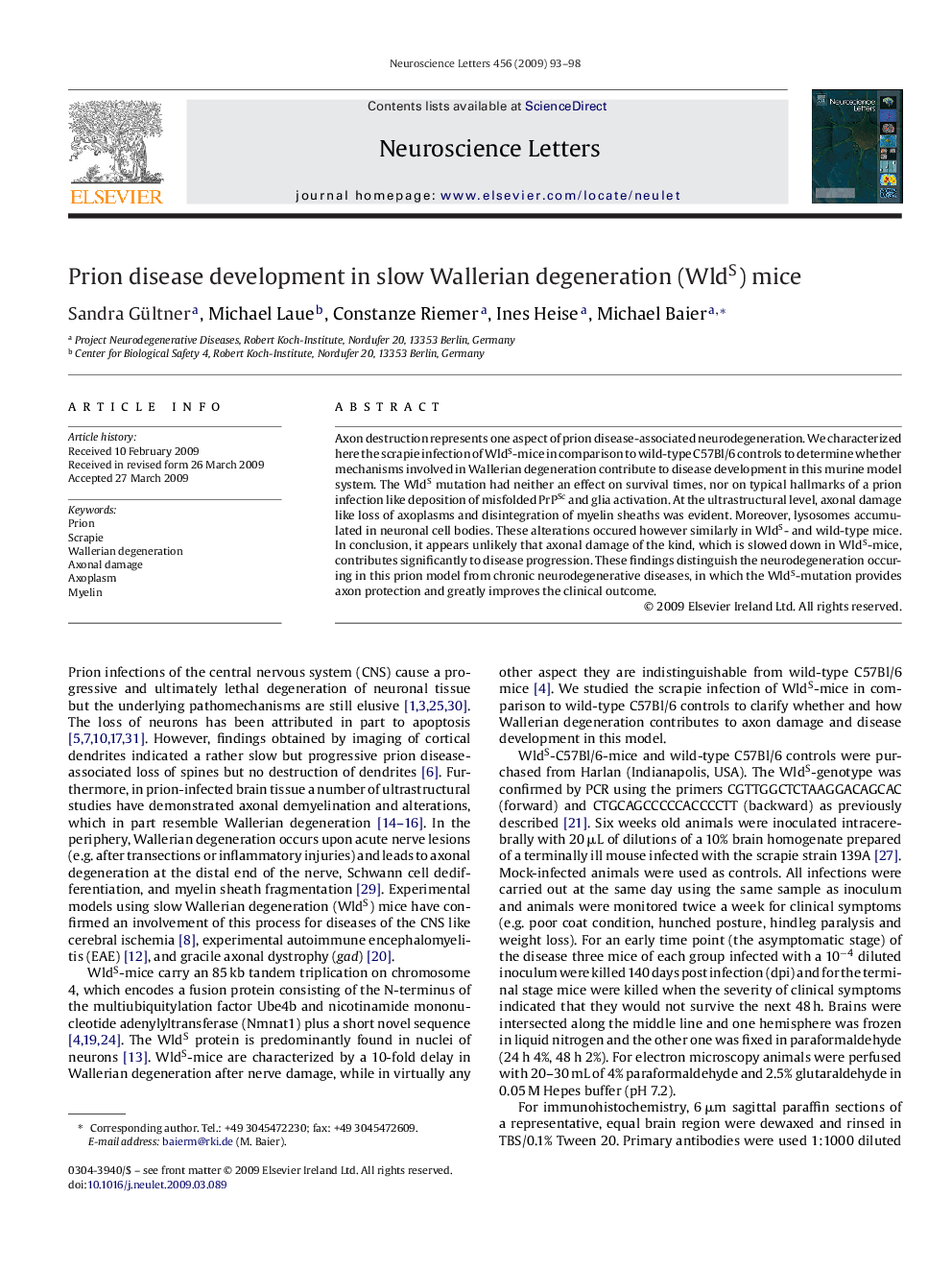| Article ID | Journal | Published Year | Pages | File Type |
|---|---|---|---|---|
| 4347423 | Neuroscience Letters | 2009 | 6 Pages |
Axon destruction represents one aspect of prion disease-associated neurodegeneration. We characterized here the scrapie infection of WldS-mice in comparison to wild-type C57Bl/6 controls to determine whether mechanisms involved in Wallerian degeneration contribute to disease development in this murine model system. The WldS mutation had neither an effect on survival times, nor on typical hallmarks of a prion infection like deposition of misfolded PrPSc and glia activation. At the ultrastructural level, axonal damage like loss of axoplasms and disintegration of myelin sheaths was evident. Moreover, lysosomes accumulated in neuronal cell bodies. These alterations occured however similarly in WldS- and wild-type mice. In conclusion, it appears unlikely that axonal damage of the kind, which is slowed down in WldS-mice, contributes significantly to disease progression. These findings distinguish the neurodegeneration occuring in this prion model from chronic neurodegenerative diseases, in which the WldS-mutation provides axon protection and greatly improves the clinical outcome.
